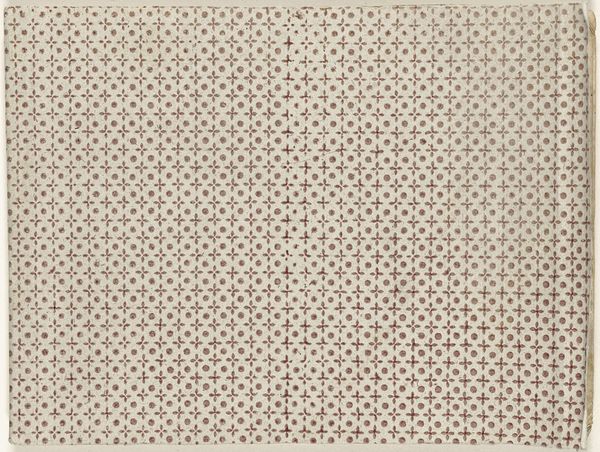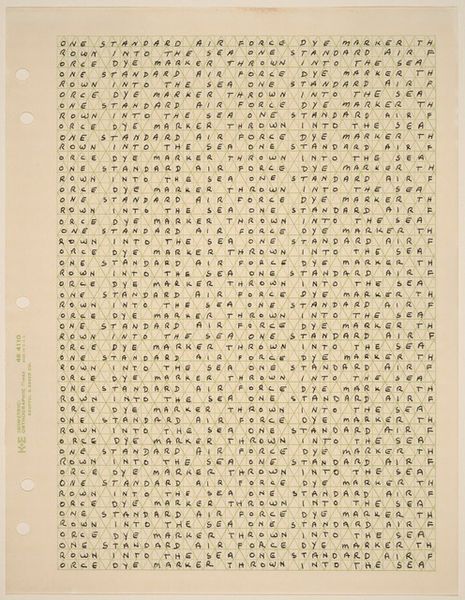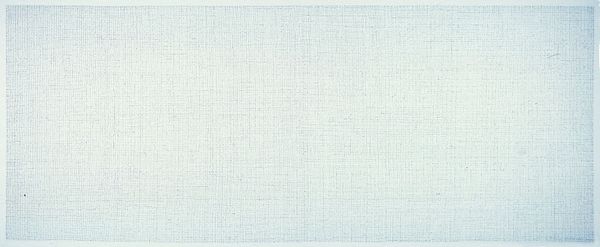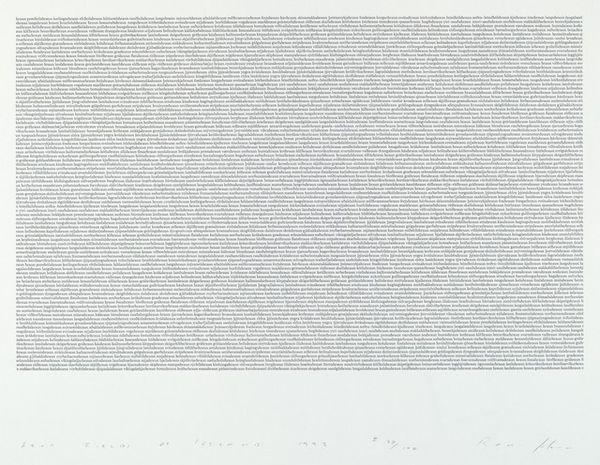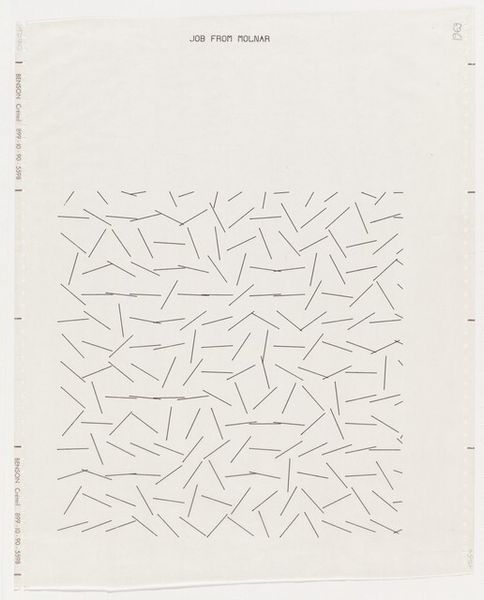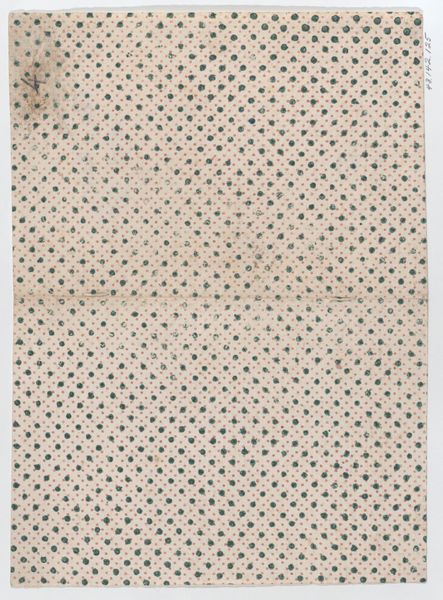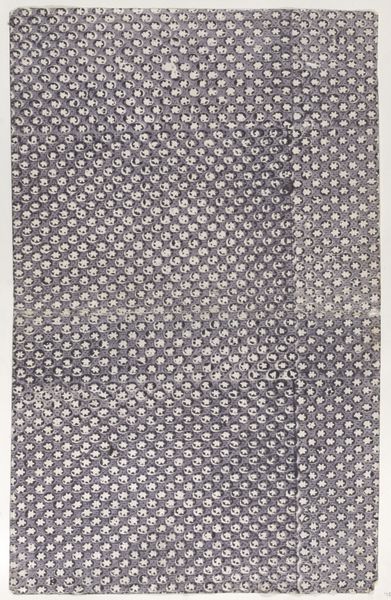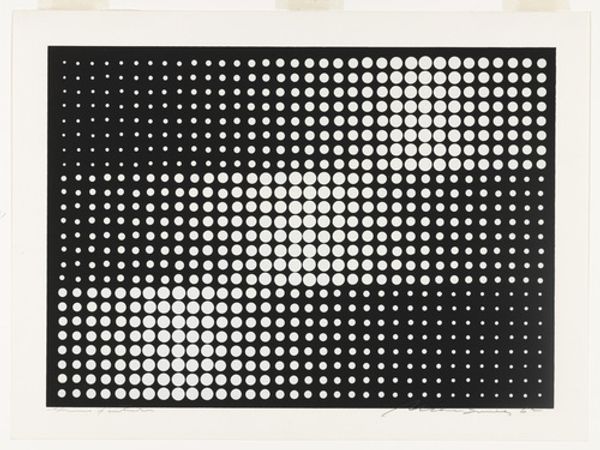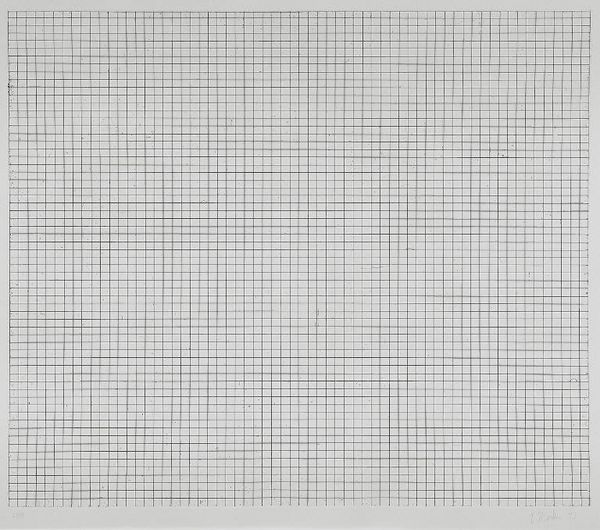
drawing
#
drawing
#
conceptual-art
#
minimalism
#
geometric
#
abstraction
#
line
Dimensions: overall: 58.5 x 73.8 cm (23 1/16 x 29 1/16 in.)
Copyright: National Gallery of Art: CC0 1.0
Curator: Brian O’Doherty's "Twenty Dot Drawing" from 1970-71 presents a grid of sixteen squares, each containing a constellation of delicately rendered dots. Editor: My immediate impression is of quiet contemplation, a sort of visual meditation. The pale, almost ethereal quality makes me think of stars fading into dawn. Curator: Right. Conceptual art often interrogates the making of art. Here, O'Doherty pares down the act to its most basic components: dots, paper, process. It almost questions what constitutes 'art' versus just simple labor. Editor: Absolutely. But look how these simple dots build meaning. There is a cosmic symbolism at work – each square a miniature universe, with patterns suggesting constellations or perhaps some encoded language. It evokes something primordial. Curator: And it is handmade! That seems pertinent. At this point, O’Doherty explored systems, perception and how meaning shifts depending on its context, so for example, whether it's an amateur’s repetitive labour or an important artwork exhibited in a fancy gallery. Editor: This emphasis on process leads me to see this work as a microcosm of human endeavors. Consider the careful placement, the inherent fallibility – not all the grids are identical! It speaks of striving, flawed patterns, of memory imperfectly recalled. It taps into this deeply symbolic place. Curator: The serial aspect reminds me of Minimalism and Pop Art. What is at the center, for example, when considering such work in conversation with Andy Warhol's printing? Is the value held in the unique print? How far can something be reproduced before it's considered valueless? Editor: I see connections there as well but still feel compelled to draw symbolic weight out of the marks. Each small variation could indicate a specific, unique element. I'm more driven towards an exploration of individual intention, expressed though imperfect execution. Curator: These little "mistakes" could come from something as basic as changing materials, tools or suppliers. I really wonder about that invisible, absent, labor and logistics that allowed for its manufacture! It shows its hand in all these tiny dots and shades. Editor: Well, these constellations of labor and intention produce something rich. Thanks to that we see echoes and symbols within what seem at first mere traces. Curator: Yes. Looking more closely I noticed such depth. It is a fascinating interplay.
Comments
No comments
Be the first to comment and join the conversation on the ultimate creative platform.
